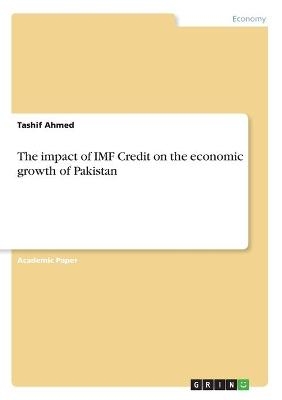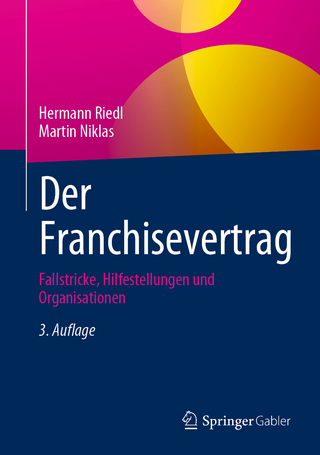
The impact of IMF Credit on the economic growth of Pakistan
Seiten
2021
|
21001 A. 1. Auflage
GRIN Verlag
978-3-346-26271-4 (ISBN)
GRIN Verlag
978-3-346-26271-4 (ISBN)
- Titel nicht im Sortiment
- Artikel merken
Academic Paper from the year 2019 in the subject Business economics - Investment and Finance, grade: 95.0, GC University, language: English, abstract: This empirical study was conducted to find the impact of IMF credit on the economy of Pakistan. Amid of 2018, Pakistan, being a developing nation is facing the critical situation for which it is left with no option other than knocking the door of IMF for borrowing credit in order to reform the up speculated economic crises. However, the studies have shown the controversial effects of IMF credit and its programs on the economies.
Many critics believed that the programs of IMF exert significant effects on the economy, though this study was conducted to find the impact of IMF credit programs on the economy of Pakistan. The results depicted that the acceptance of the null hypothesis and rejection of the alternative hypothesis. Thus, the finding is that there is no impact of IMF credit programs on economic growth (GDP) of Pakistan since 1971. This proves that Pakistan can invest their borrowed loan in profitable projects to prosper the economic growth. Pakistan, being a developing nation is facing the critical situation for which it is left with no option other than knocking the door of IMF for borrowing credit in order to reform the up speculated economic crises. Before approving the loan the government of Pakistan must convince the IMF for less harsh conditionality against the additional fund than its quota. However, it would be a challenging task to reach IMF to demand 300% more than its quota. So, it is significant to know that whether the government is consuming that loan in fruitful projects so that enough turnover would generate from the economy to pay back the acquired loan. Unfortunately, despite of the global growth objective of IMF, around 11 major conditions imposed by IMF including: excise duty on service as well as agricultural sector, less expenditure in development programs of public sectors, currency devaluation, ceasing gas and electricity subsidy, uniformity in the rates of dollar exchange rate and interbank, ceasing of financial intervention in stock market of Pakistan, raise markup rate on bank and bank transactions, ceasing of non- development expenditure under budget of defense, non-allowance of supplementary grants to the government sectors, reduction in the non-developing expenses of ministries.
Many critics believed that the programs of IMF exert significant effects on the economy, though this study was conducted to find the impact of IMF credit programs on the economy of Pakistan. The results depicted that the acceptance of the null hypothesis and rejection of the alternative hypothesis. Thus, the finding is that there is no impact of IMF credit programs on economic growth (GDP) of Pakistan since 1971. This proves that Pakistan can invest their borrowed loan in profitable projects to prosper the economic growth. Pakistan, being a developing nation is facing the critical situation for which it is left with no option other than knocking the door of IMF for borrowing credit in order to reform the up speculated economic crises. Before approving the loan the government of Pakistan must convince the IMF for less harsh conditionality against the additional fund than its quota. However, it would be a challenging task to reach IMF to demand 300% more than its quota. So, it is significant to know that whether the government is consuming that loan in fruitful projects so that enough turnover would generate from the economy to pay back the acquired loan. Unfortunately, despite of the global growth objective of IMF, around 11 major conditions imposed by IMF including: excise duty on service as well as agricultural sector, less expenditure in development programs of public sectors, currency devaluation, ceasing gas and electricity subsidy, uniformity in the rates of dollar exchange rate and interbank, ceasing of financial intervention in stock market of Pakistan, raise markup rate on bank and bank transactions, ceasing of non- development expenditure under budget of defense, non-allowance of supplementary grants to the government sectors, reduction in the non-developing expenses of ministries.
| Erscheinungsdatum | 18.01.2021 |
|---|---|
| Sprache | englisch |
| Maße | 148 x 210 mm |
| Gewicht | 51 g |
| Themenwelt | Wirtschaft ► Betriebswirtschaft / Management |
| Schlagworte | credit • Pakistan |
| ISBN-10 | 3-346-26271-5 / 3346262715 |
| ISBN-13 | 978-3-346-26271-4 / 9783346262714 |
| Zustand | Neuware |
| Haben Sie eine Frage zum Produkt? |
Mehr entdecken
aus dem Bereich
aus dem Bereich
Ein steuerlicher Praxisleitfaden
Buch | Softcover (2022)
Springer Fachmedien Wiesbaden GmbH (Verlag)
CHF 53,15
den Kunstmarkt verstehen, Wissen aufbauen und klug investieren
Buch | Softcover (2023)
Springer Fachmedien (Verlag)
CHF 41,95
Fallstricke, Hilfestellungen und Organisationen
Buch | Hardcover (2024)
Springer Gabler (Verlag)
CHF 62,95


